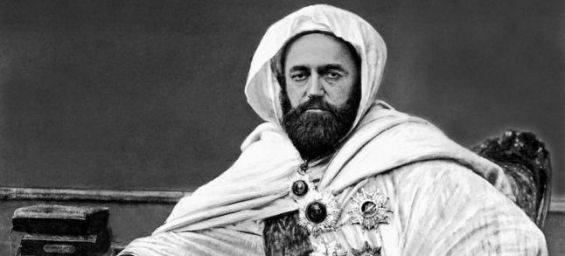With French forces occupying Algeria in the 1830s, the Moroccan Sultanate saw them as a direct threat. Supporting the Algerian resistance led by Emir Abdelkader became a priority. Sultan Moulay Abderahman spared no effort aiding the Algerian leader in his fight against French dominance.
This support significantly impacted relations with France. As historian Rafael Danziger wrote, «Franco-Moroccan relations from 1839 to 1843 were characterized by the Sultan's continuous efforts to eliminate the dangerous French presence in Algeria».

In his article «The attitude of Morocco's Sultan Abderahman towards the French as reflected in his internal correspondance (1844 - 1847)», he further states that the Sultan tried to push back the French threat «first through his own forces and later through Abd al-Qadir».
Caftan as political statement
Sultan Abderahman's support went beyond military aid. He chose a powerful cultural gesture to mark his backing of the Emir and his guerilla: a traditional Caftan signifying imperial favor. Historical sources reveal that on July 3rd, 1839, a Moroccan delegation presented the Caftan to Emir Abdelkader in a ceremony witnessed by Algerian crowds.
French historian Philippe d'Estailleur-Chanteraine confirms this in his books, stating that Sultan Moulay Abderahman «sent to Abd-El-Kader, help of all kinds and even the green caftan which designated him as his Khalifat» (delegate). He further details that the Moroccan delegates handed over the Caftan on July 3rd, 1839, and the news spread amongst Algerian tribes as far as Tripolitania, present-day Libya.

This gift was not just a token of friendship; it was a political statement. The Caftan reassured Emir Abdelkader and sent a clear message to France about Morocco's unwavering support for Algerian resistance, and symbolized imperial recognition of the Emir's leadership.
However, French retaliation was swift. A few years after the Caftan exchange, France attacked Tangier and Mogador to pressure Morocco and force the expulsion of Emir Abdelkader, who had sought refuge in the country. This eventually led to the 1844 Isly battle and the Tangier treaty, which declared Emir Abdelkader an outlaw and pressured Morocco to arrest him.
While the Caftan served as a political symbol in the 19th century, today it has become a point of cultural contention. Its origins are hotly debated online, with Morocco filing for UNESCO recognition as part of its intangible heritage while Algerian voices claim it as a supposedly «stolen» cultural treasure.




 chargement...
chargement...













